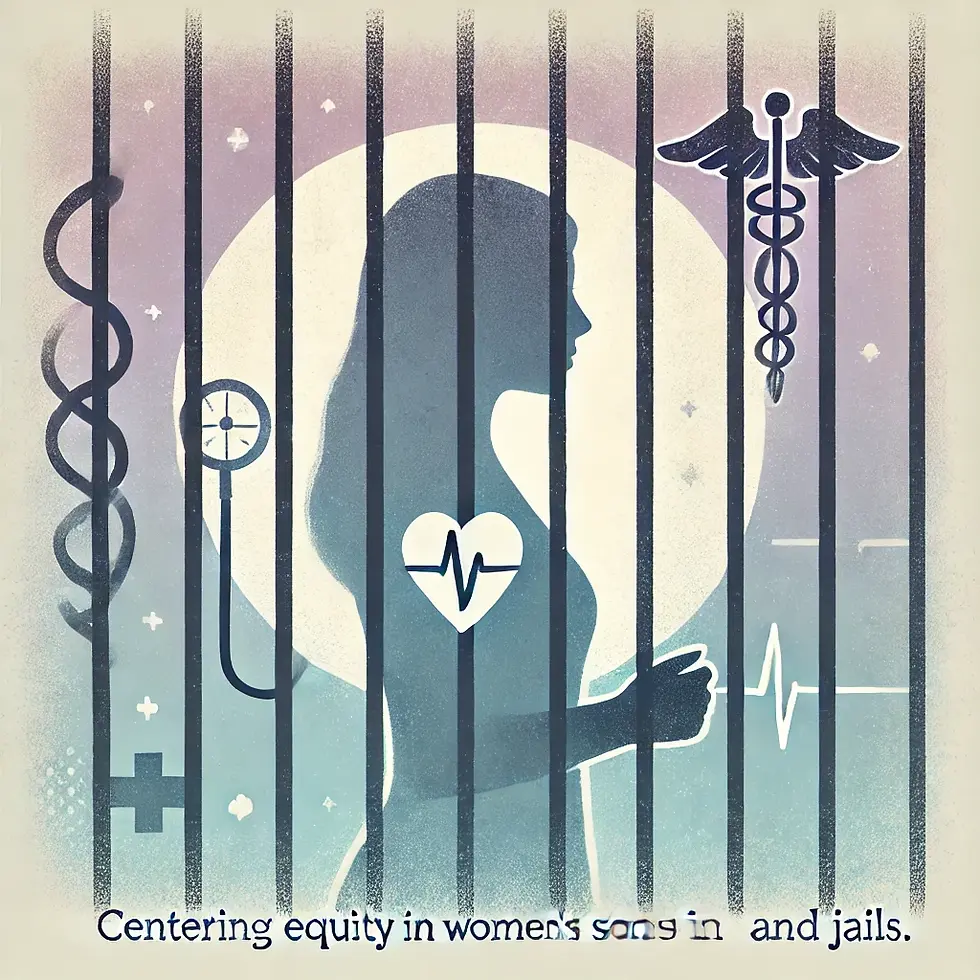Correspondence Course Hustle — Higher Education from a Cell
- Swop Behind Bars

- Jun 6
- 5 min read
Education is often sold as the golden ticket—the “way out,” the “great equalizer,” the shiny ladder out of poverty. But for women who’ve survived violence, exploitation, poverty, and incarceration, that ladder is missing rungs, set on fire, and chained to a concrete floor. At the intersection of gender, race, trauma, and the carceral system, education isn’t just out of reach—it’s actively denied.
When Cassandra first saw the flyer for a paralegal certificate course taped to the bulletin board in the prison dayroom, she stopped in her tracks. She’d been incarcerated for nearly a year, sentenced on trafficking-related charges after being arrested in a sting that never once recognized her as a survivor. Before prison, college had been out of the question—she dropped out in the tenth grade, raised two kids while surviving on and off the track, and never had the time, money, or safety to think about degrees. Now, for the first time in her life, she felt something unfamiliar: hope.
But the hope didn’t last long.

The course was offered through a correspondence program, which meant everything had to be done by mail. The intake packet alone was 37 pages. She needed envelopes, stamps, access to a typewriter, and at least $150 to register. She filled it out by hand using a borrowed pencil. The prison mailroom “lost” her application the first time. When she tried again, she was told she needed a staff signature to verify her identity—but no one on her tier had been trained to do that. By the time she finally got enrolled, she’d already missed the first assignment deadline.
Still, she pushed through. She wrote essays by hand and mailed them out. She waited three weeks for feedback. She studied criminal law between laundry duty and early-morning count. When her mom passed away, she requested an extension—but the school never got the letter. Her grade dropped, but she didn’t quit.

Her friends inside called it her “jail hustle,” but Cassandra knew it was more than that. It was survival in a different form. The course helped her understand her own case. It helped her write better grievances. It helped her believe that one day, she might work for justice—not just survive its absence.
Cassandra’s story is not unique. In fact, for many incarcerated women—especially survivors of trafficking and gender-based violence—prison is the first time anyone even suggests they might be college material. For some, it’s the first time they’re told they’re smart. And for far too many, it’s the last time they get the chance to try.

Hope, Interrupted: The Reality of In-Prison College
While popular media sometimes frames prison as a place where people “have time to better themselves,” the reality of accessing higher education inside is anything but straightforward. College programs are few and far between, often under-resourced, poorly staffed, and dependent on outdated correspondence formats. Despite recent policy wins—like the 2023 restoration of Pell Grant eligibility for incarcerated students—logistical and bureaucratic barriers remain enormous.
Most incarcerated students cannot access computers, let alone the internet. In many facilities, tablets are tightly monitored and restricted to pre-approved content. Correspondence courses often require self-discipline, outside financial support, and an enormous amount of unpaid labor: copying out textbooks by hand, tracking deadlines without calendars, paying for every sheet of paper and envelope, and waiting weeks or months for feedback from professors who may or may not understand prison life

The Costs They Don’t Tell You About
Higher education in prison is expensive—even when tuition is covered. Students are responsible for all the hidden costs: postage, paper, pens, dictionary access, and time off from prison jobs. In facilities where women earn 8 to 20 cents an hour, that means a single class can represent months of savings. In some states, prisons even charge a fee for participation in college programs—forcing students to choose between an education and commissary necessities like tampons or ibuprofen.
Then there’s the emotional toll. Learning in prison is an uphill battle. There are no quiet libraries or student lounges—just metal bunks, yelling from down the tier, and lights that never turn off. Classmates disappear without warning—transferred, disciplined, or released. Professors who teach by mail rarely account for trauma, grief, or the raw emotional exhaustion that incarcerated students carry.
And yet—despite all this—women persist.

Outside Help is Everything
For most incarcerated students, success is only possible because of outside allies: pen-pals who proofread papers, family members who send in stamps, or advocacy organizations that fill in the gaps. Programs like SWOP Behind Bars’ paralegal scholarship initiative not only fund tuition—they offer mentorship, encouragement, and belief. That belief is often the first and most powerful intervention in a life full of systems that said “no” at every turn.
These partnerships matter. A single scholarship can change someone’s trajectory—not just because of the job they may get, but because of how it reframes their identity. From “offender” to scholar. From survivor to advocate.
The Bigger Picture: Education as Liberation, Not Rehabilitation
It’s time we stop framing education in prison as a bonus or reward for good behavior. It is not a privilege. It is a tool of liberation—especially for those who have been systematically denied access at every stage of life.
Most incarcerated women were failed by public schools, silenced by trauma, excluded from opportunity, and funneled into criminalized survival. College isn’t a luxury for them. It’s a chance to reclaim their stories, heal their communities, and build futures that were never made with them in mind.
The restoration of Pell Grant eligibility is a step in the right direction—but it’s just a beginning. Real access means funding prison-based programs, removing barriers to technology and materials, ensuring trauma-informed support, and recognizing incarcerated people as worthy students—not just statistics.

Call to Action: Fund a Hustler, Fuel a Dream
At SWOP Behind Bars, we’re not just telling stories—we’re building futures. Our Paralegal Scholarship Programsupports incarcerated survivors who are ready to become advocates, organizers, and legal warriors. But we can’t do it without you.
Your donation helps cover the real costs: envelopes, tuition, textbooks, application fees, and emotional support. It helps someone like Cassandra keep going—past the red tape, past the grief, and toward a future she’s writing herself.
Support the scholarship fund today. Because justice shouldn’t end at a sentence—and neither should someone’s chance at a degree.
Closing the Chapter, Opening the Future
Education is more than a classroom, a test, or a diploma. For criminalized women, survivors, and sex workers, it’s a form of resistance. It’s a survival strategy. It’s a way to reclaim power in systems designed to keep us voiceless.
Throughout this series, we’ve challenged what education really looks like behind bars and beyond. We’ve named the barriers, lifted up the hustlers and healers, and made one thing clear: real learning starts when we stop gatekeeping and start listening.
At SWOP Behind Bars, we believe every woman—regardless of her past—deserves access to knowledge, support, and the tools to shape her own future.
Thank you for reading. Now let’s turn these words into action.






Comments